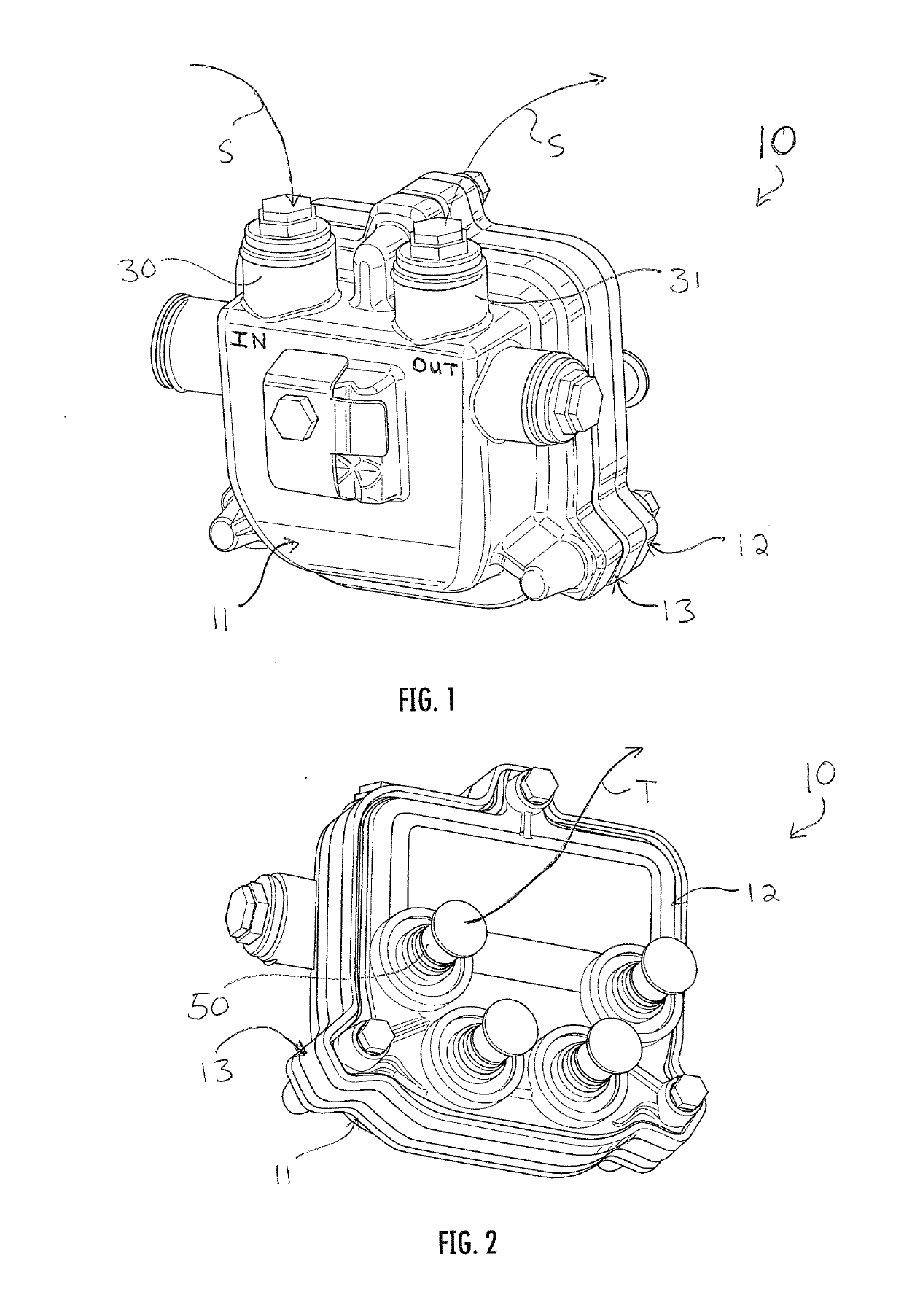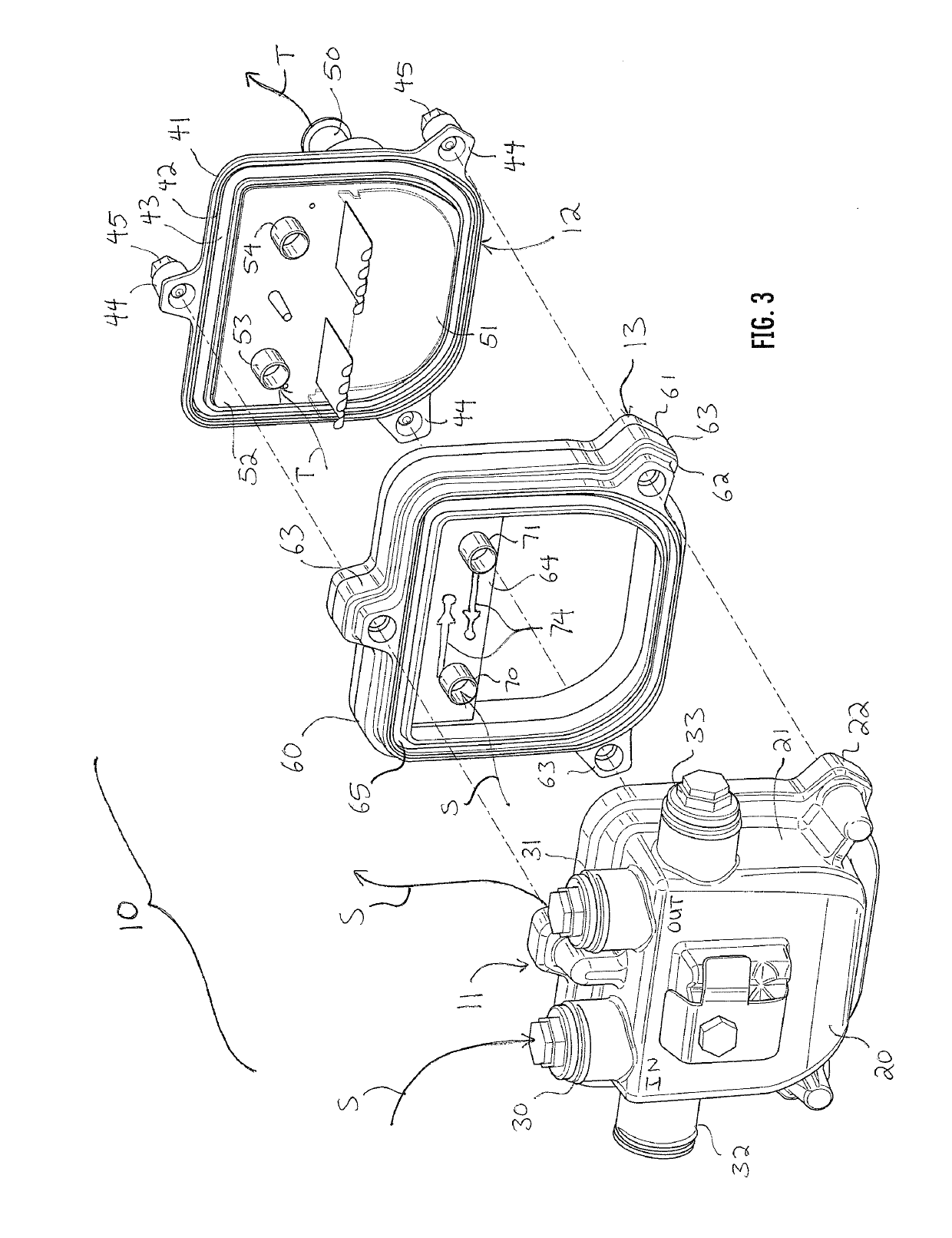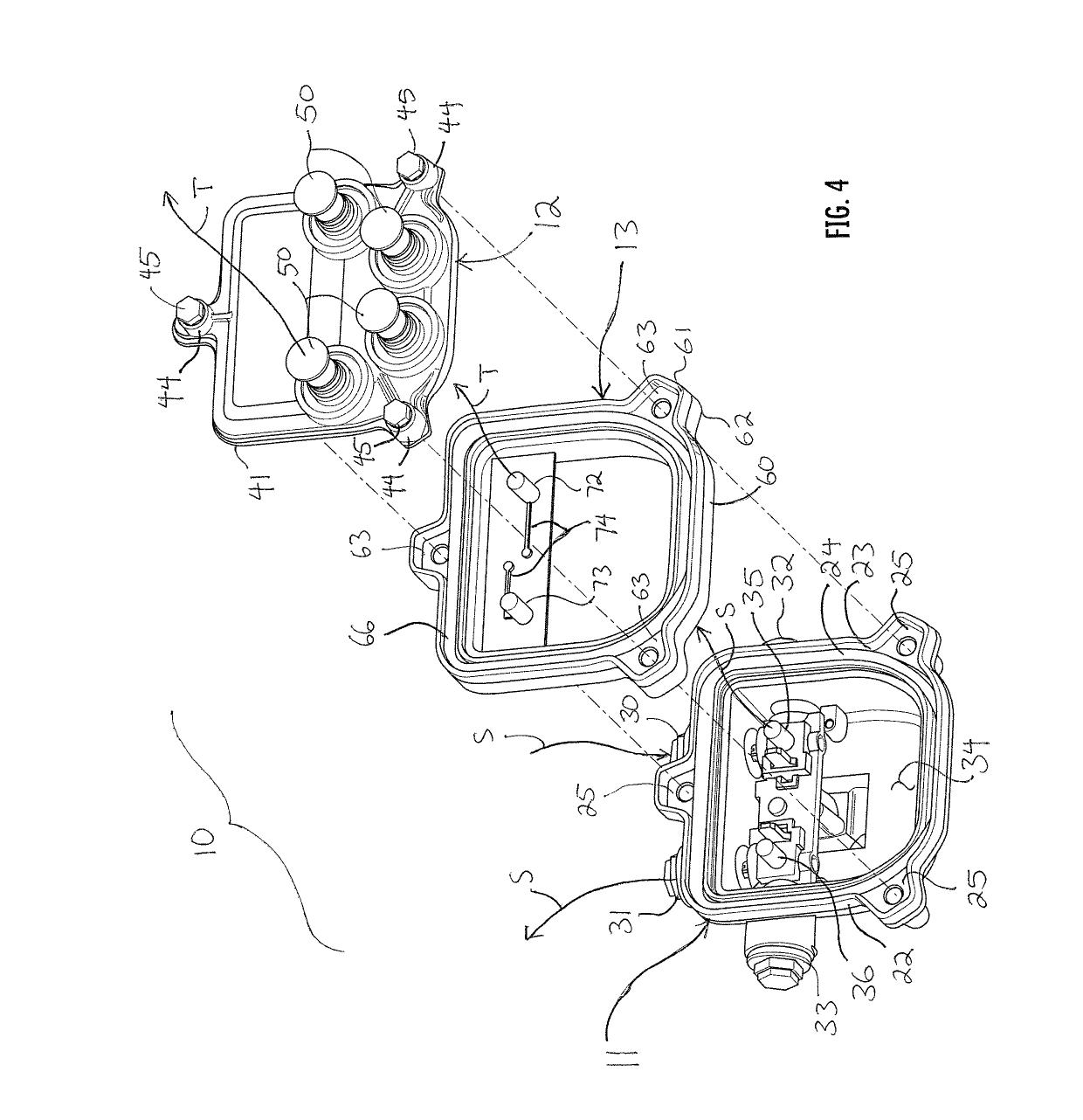Polarity-Inverting Telecommunication Tap
a technology of polarity inverting and telecommunications taps, applied in the field of telecommunication, can solve the problems of inability to provide such rf services, time-consuming and laborious, and high cost of balancing by installing nodes in subscriber-dense areas
- Summary
- Abstract
- Description
- Claims
- Application Information
AI Technical Summary
Benefits of technology
Problems solved by technology
Method used
Image
Examples
Embodiment Construction
[0013]Reference now is made to the drawings, in which the same reference characters are used throughout the different figures to designate the same elements. FIGS. 1 and 2 illustrate a telecommunication tap 10. The tap 10 includes a backplate 11, an opposed faceplate 12, and an adapter plate 13 disposed therebetween. The adapter plate 13 is useful for inverting the polarity or directionality of a CATV signal S within the tap 10, so as to allows subscriber CATV devices connected to the tap 10 to function with correct polarity, despite the presence of a node split upstream from the tap 10.
[0014]Referring primarily now to FIGS. 3 and 4, the backplate 11 has two sets of coaxial cable posts for connecting the tap 10 to a telecommunication line such as a feeder cable or hard line. The backplate 11 shown here has a well-known footprint or form factor with a flat top, flat sides, and a curved bottom. This is one of four primary form factors most prominent in the industry, though this invent...
PUM
 Login to View More
Login to View More Abstract
Description
Claims
Application Information
 Login to View More
Login to View More - R&D
- Intellectual Property
- Life Sciences
- Materials
- Tech Scout
- Unparalleled Data Quality
- Higher Quality Content
- 60% Fewer Hallucinations
Browse by: Latest US Patents, China's latest patents, Technical Efficacy Thesaurus, Application Domain, Technology Topic, Popular Technical Reports.
© 2025 PatSnap. All rights reserved.Legal|Privacy policy|Modern Slavery Act Transparency Statement|Sitemap|About US| Contact US: help@patsnap.com



